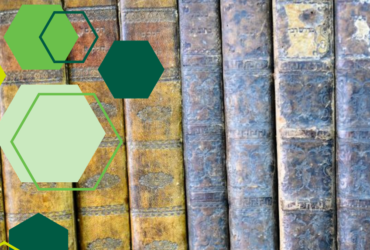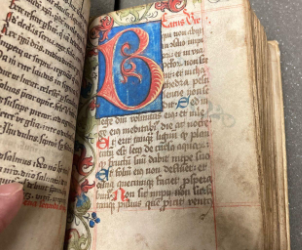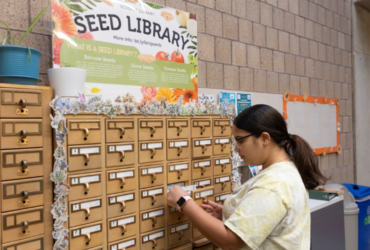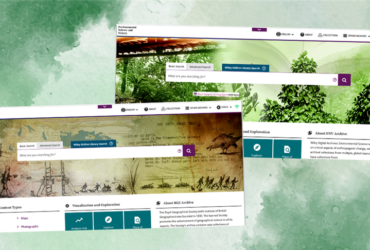In recent years, the Libraries have been working to enhance our holdings of medieval and early modern manuscripts, which have many uses as tools for research and discovery across the academic disciplines, from the humanities to the hard sciences. Frequently these acquisitions have come through purchases from antiquarian booksellers and auction houses, often in collaboration with stakeholders from across campus.
Five years ago, a make-shift meeting room formed at the Science Library by groups who needed to talk about issues like climate change, severe weather and food insecurity started simply scooting nearby shelves together. The shelves were soon covered in colorful presentation posters summarizing related course work. Then the poster-clad shelves became a sort of fort around a clutch of cozy chairs and a borrowed tuft of carpet. This phenomena came to be known as the “Sustainability Hub” and it was born from the work applied by Jen Embree, subject librarian and Sustainability Hub coordinator and Neyda Gilman, sustainability and STEM engagement; health science librarian.











